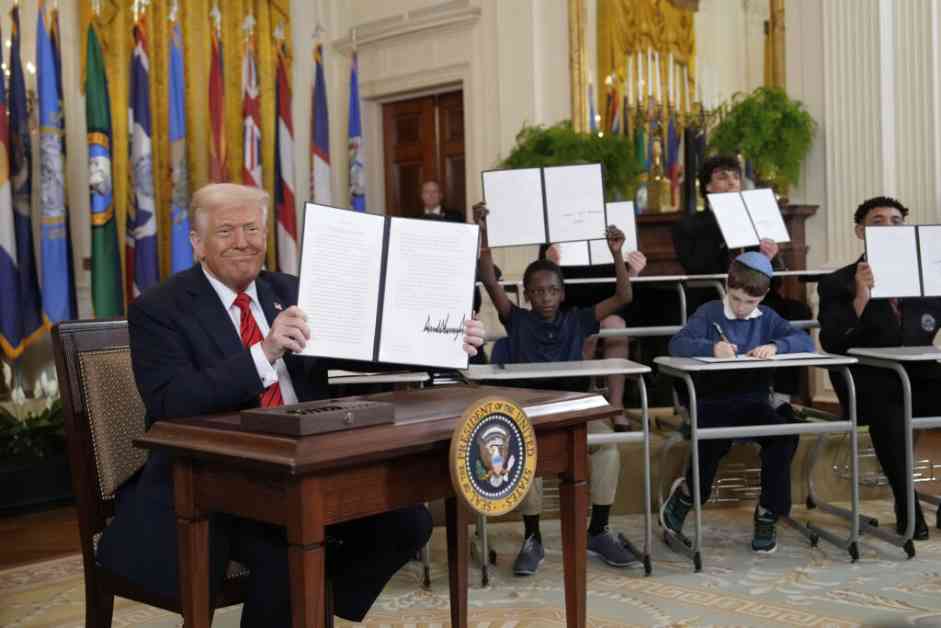President Donald Trump recently signed an executive order, as captured in a vivid image with young students holding up copies of the document in the East Room of the White House on March 20, 2025. The order calls for the dismantling of the Department of Education, a move that has long been part of the conservative agenda. This bold step, aiming to shift educational control from federal to local levels, has sparked controversy and raised concerns among different stakeholders in the education sector.
Presidential Directive to Eliminate Department of Education
In a symbolic gesture, President Trump, flanked by a group of students working on school desks, emphasized his administration’s commitment to shutting down the Department of Education. This action, propelled by a campaign promise, seeks to transfer education authority back to states and local communities. The executive order mandates Education Secretary Linda McMahon to oversee the closure process while ensuring that vital educational services, programs, and benefits continue uninterrupted.
The decision to eliminate the Department of Education, which accounts for less than 10% of public school funding and administers essential programs like Pell grants, has raised concerns about the impact on vulnerable students. While the move to downsize the agency’s workforce has already begun, the complete dissolution of this Cabinet-level department requires congressional approval, presenting a significant legislative challenge.
Mixed Reactions and Possible Implications
Critics of the executive order, including children’s advocates and education professionals, have expressed skepticism about its potential repercussions. The Association of California School Administrators warned that the removal of essential funding could disproportionately affect marginalized student populations, undermining decades of progress in educational equity. Despite historical calls from Republicans to shutter the department, the political landscape makes the process challenging, given the required Senate approval.
As lawmakers, such as Senator Bill Cassidy and House Speaker Mike Johnson, align with the President’s objectives, concerns linger about the disruptive impact on federal education programs. California Attorney General Rob Bonta has pledged to monitor the implementation of the executive order closely, citing ongoing legal battles over federal employee terminations and research contract cancellations. The broader implications of this move may jeopardize educational access and equity initiatives, endangering the future success of millions of students.
Educational Equity and Policy Impact
President Trump’s executive order reflects a broader ideological shift towards reducing federal oversight in education and redirecting resources towards private school vouchers. By framing the directive as a means to combat illegal discrimination and promote law enforcement policies, the administration has sparked controversy among advocates like Jessie Ryan and Guillermo Mayer. The focus on dismantling diversity, equity, and inclusion initiatives has raised concerns about the erosion of public trust in the education system and the potential exclusion of vulnerable student populations.
As stakeholders across the education sector grapple with the repercussions of this executive order, the future of federal education policy and funding remains uncertain. The ideological battle between centralized federal control and localized decision-making underscores the complexity of modern education governance. Balancing accountability, equity, and innovation in the wake of these policy changes will require collaborative efforts and strategic advocacy to ensure that all students have access to quality education and equal opportunities for success.
